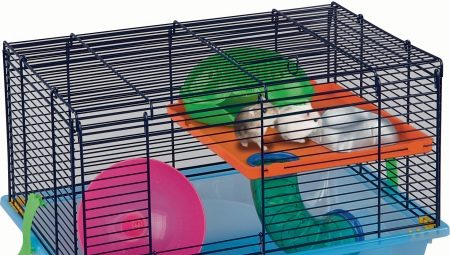When buying a rodent as a pet, the question immediately arises of where he will live. Cages - this is the best option for these animals. However, approaching their choice is required with all responsibility, because the nature, health and life expectancy of the pet depend on the correct choice of home.
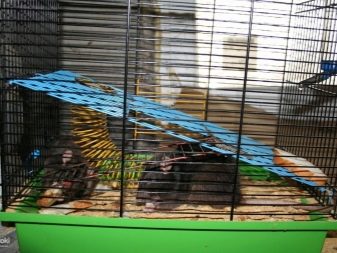

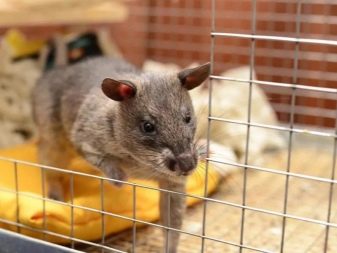
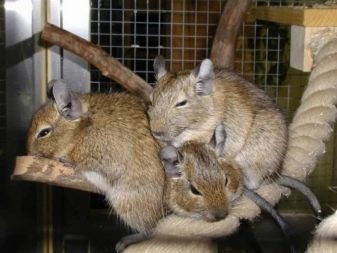
Features of the content of rodents
One of the main rules when choosing a cage for rodents (regardless of its type) - it should not have solid walls (on the basis of the container). In such a home, there is insufficient air circulation, so it becomes wet inside. In such conditions, the litter quickly dries, which becomes the reason for the active reproduction of bacteria and an unpleasant odor, and the animal can become sick.
The cage should not have holes, sharp corners, peeling paint, otherwise the animal will try to escape, it may be injured.
It is preferable to choose collapsible options - they are easy to care for, and if necessary, the cage can be folded so that it does not take up much space during storage or transportation.
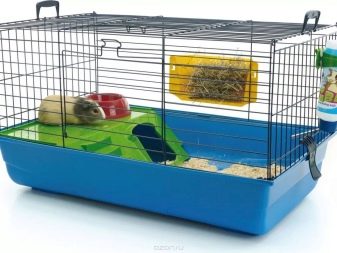
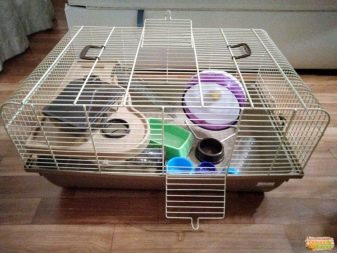
The height of the cell pan is at least 10 cm, then its contents will not fly out of the cell. Today, most cells have a plastic tray, which is logical. Such a pallet is easy to wash, it is not susceptible to corrosion (as is the case with metal), does not absorb odors and will not be damaged by a rodent (as happens with a wooden one). However, for some small rodents it is better to purchase a cage with a trellised floor.
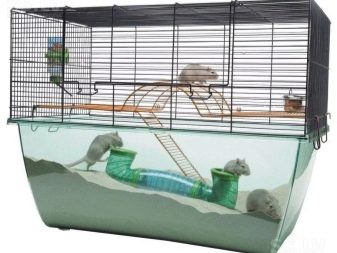
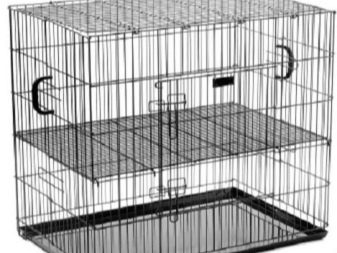
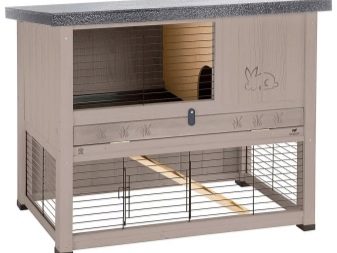
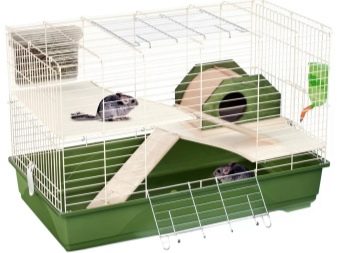
Kinds
First of all, rodent cages are classified depending on who they are for. Different types of pets require different types of care and, accordingly, housing.In addition, rodents differ in size, which affects the size of the cell.
Speaking of dimensions, one should stop at the number of storeys of the cell. Multi-tier cages are connected by stairs along which the animal can run. In addition, such dwellings are optimal for keeping several pets of the same species.
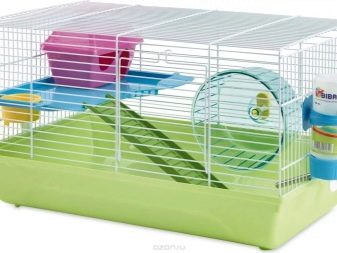
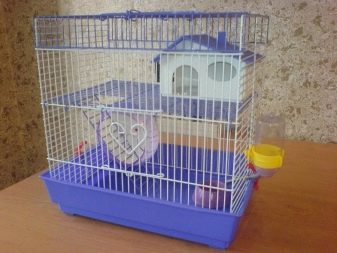
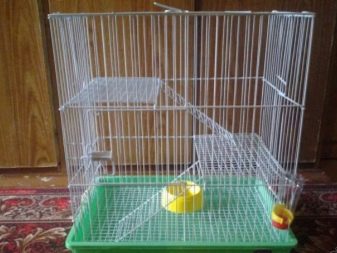

To understand whether the cage is suitable for a pet, you can use the simple formula. For this, the parameters of the length, width and height of the cell are multiplied among themselves. The resulting number must be divided by 100,000. As a result, a figure will be obtained that means how many adults can live in this cell.
The length of the cell, as already mentioned, is determined by the size of the rodent. For small animals (rats, mice, hamsters), dwellings up to 30 cm long are sufficient. If the animal is large (chinchilla, guinea pig), then the cage must be at least 100 cm long.
Let us consider in more detail the housing options for different types of rodents.
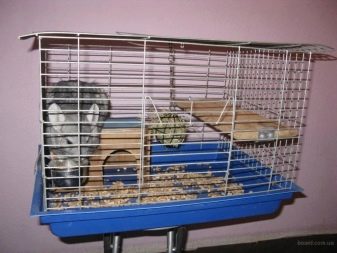
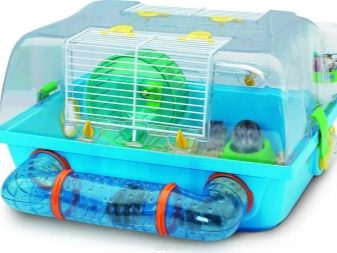
Guinea pigs, chinchillas
Cages for these pets choose quite spacious - at least 70-80 cm long, 40-50 wide with a cell height of at least 25 cm. If you live a couple of guinea pigs, then the size of the cell should also increase by 1.5-2 times.
A high or two-story cage, like a dwelling with shelves, is not suitable for these pets - guinea pigs and chinchillas are not adapted to climb stairs.
And even if they climb to the second floor, they will not be able to get down on their own. And a fall even from a small height for these rodents is fraught with serious injuries, even fatal.
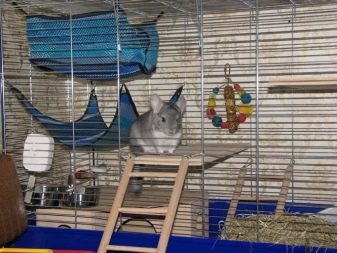
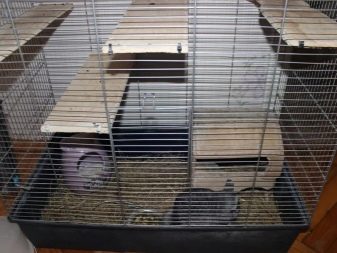
The best material for a guinea pig cage is metal or durable plastic. But wooden analogues should be abandoned, because these rodents like to gnaw a tree, which means they can easily damage the cage.
The floor should be solid, convenient when it is a plastic pallet. It is easy and quick to remove and clean. The mesh floor of the cage is not suitable for guinea pigs and other large rodents. There is a high probability that the animal will catch on the bars of the legs and get injured.
For a chinchilla, it is preferable to choose a display case, since the animal loves enclosed spaces. The material can be plastic, glass, wood (the animals themselves prefer natural materials), as well as their combinations. Part of the showcase can be made using metal rods or mesh.
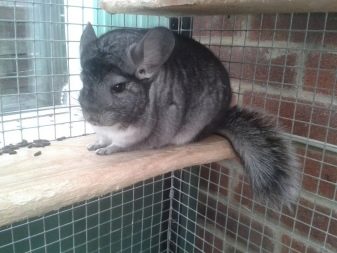
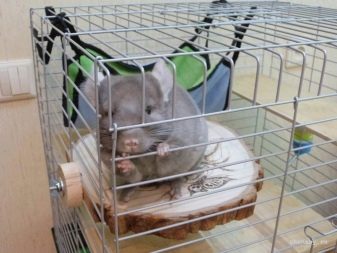
Rats and mice
The recommended cell sizes for rats are 30 by 50 cm. For mice, you can purchase a home 1.5-2 times smaller. The indicated "houses" are intended for one rodent.
The optimal cage is a metal cage with dense rods (a soft metal similar to a rat’s net is cut through if desired and persistence), in which the walls are represented by rods and the floor is trellised. Pay attention to the distance between the rods. For an adult animal, it should not exceed 1.2-1.5 cm, for small individuals - 0.7-1 cm. Otherwise, the rat may be injured, trying to stick its muzzle through them.
A two- and even a three-story cage, a dwelling with ladders, are perfect for these rodents, since mice and rats are active animals, they need movement to maintain their shape and health. For this reason, the most inappropriate version of the house - a terrarium with smooth walls - in it animals can not cling and climb up.
It is believed that females are more active and love to climb, so for females the cage can be taller and reach a height of 60 cm.
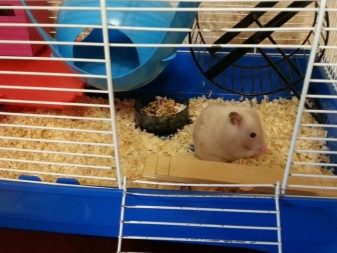
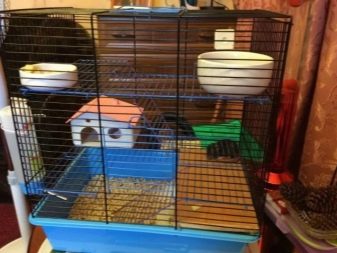
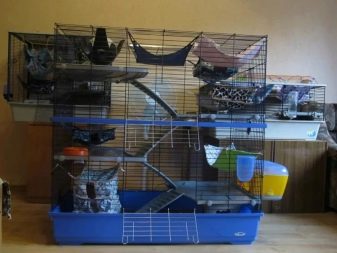
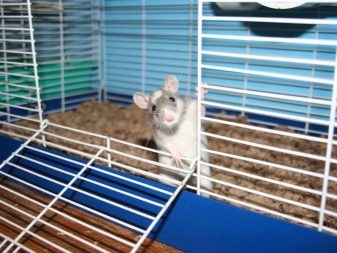
Hamsters
Cages for hamsters can have equipment similar to the house for rats and mice. However, in the case of hamsters, the optimal cage size is 45 by 45 cm at a height of 15-20 cm. Various ladders, tiers - this is what is necessary for the “proper” hamster dwelling. Materials - metal or plastic.
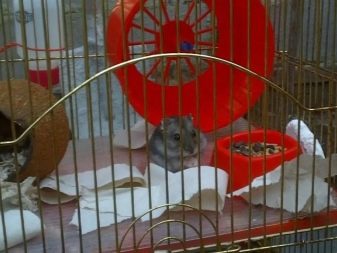
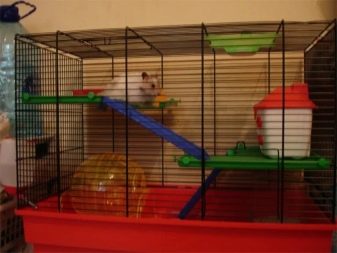
Gerbils
Despite the small size of these rodents, they need a fairly spacious cage. Otherwise, gerbils will not be able to live their life spans. Optimum sizes - not less than 50 cm in width and 60-70 cm in length.
These animals gnaw through wood and plastic easily, therefore better to buy metal cells for them (the pallet should also be made of metal). These rodents will feel quite good in multi-level combined cages, where the first floor can be glass, and the second - from metal rods or mesh.


As we found out, most rodents feel comfortable in a cage with metal bars. To extend the service life of the latter will help a special coating. It can be of the following types.
- Colorful. Manufacturers use powder paint, which protects the metal from corrosion and gives the cell an attractive look. However, pets easily gnaw her, after which she ceases to perform the functions described above, begins to crack and climb. As a result, such coverage is the most short-lived and cheapest (mainly such cells are produced by domestic and Ukrainian companies).
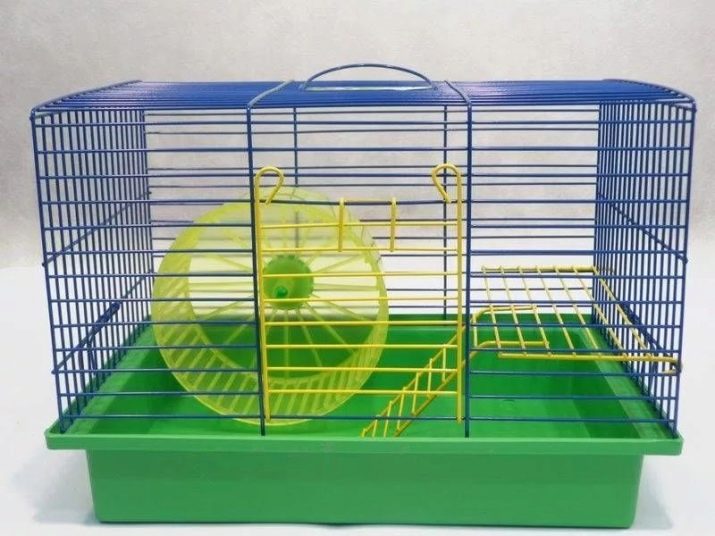
- Zinc. Products of the middle price segment are distinguished by better resistance to damage and protect against corrosion. However, if the rodent carefully polishes the rod in one place or due to inaccurate transportation, the zinc coating may be damaged and the cage will begin to rust. It is usually produced by Russian, Ukrainian, Polish and Chinese manufacturers.
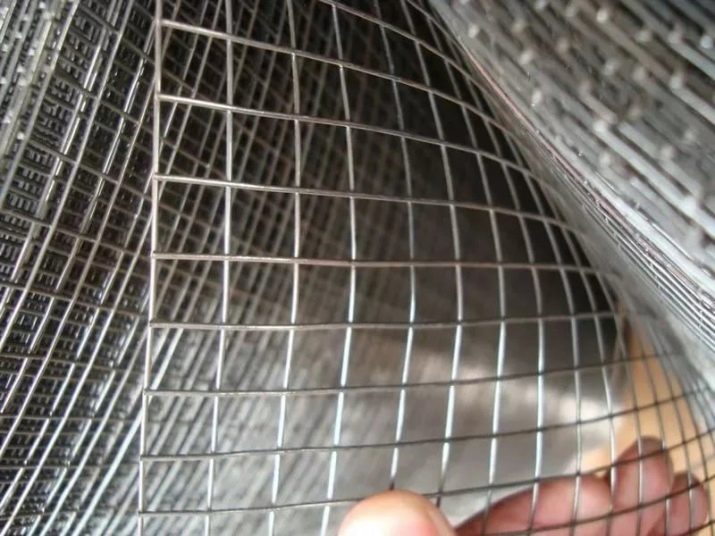
- PVC It is considered the most stable and durable, such cells are produced mainly by foreign companies operating in the premium segment. However, despite the increased stability, if such a coating is still damaged, the corrosion process will be inevitable.
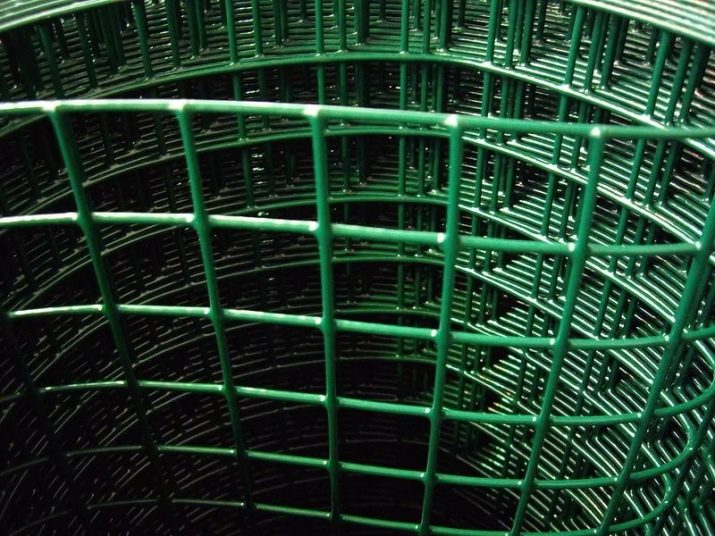
Additional elements for the cell
For a comfortable pet living, it is important to take care of the internal organization of the space of his home. For all rodents, you should purchase a feeder and a drinker (it is called a "nipple drinker"). Preferably, they are mounted. This will save free space inside and ensure the same order.
If the feeder can still be put on a pallet, then it is categorically not recommended to do this with a drinker - the water will spill all the time, and the litter and hair of the animal will get wet.
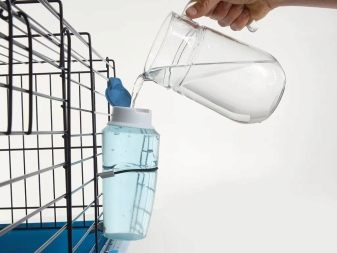
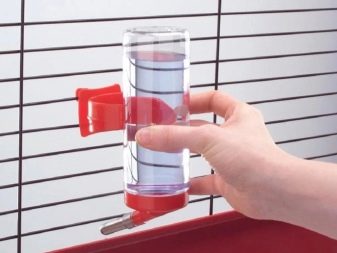
Another obligatory thing for all rodents is the “interior item” - a house. In it, the animal can hide when it gets tired and scared. Many owners say that the house is not needed - rodents still sleep just in a cage, outside the house. However, the latter is needed, rather, for the psychological comfort of the animal.
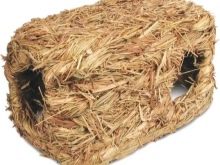
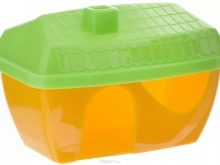

In addition to the basic accessories, there are additional ones. They may vary depending on the type of animal. For example, sedentary guinea pigs and chinchillas, which also have an inflexible and fragile spine, do not need ladders, shelves and a running wheel in the cage.
Active hamsters and rats ladders and other climbing equipment are vital. Be sure to organize ladders in the cage (part of them will be replaced by a stand, a special cabinet or just a grate fixed from one part of the cage to another), hanging swings, various wooden cubes (to bite them), tubes that can serve as transitions. For mobile rodents, you can immediately purchase cells with a maze or organize the latter yourself using pipes.
Hamsters will also need a running wheel, but for mice and rats this accessory is dangerous because of their long tails.
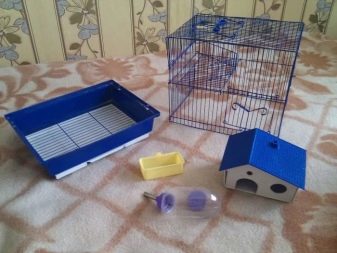

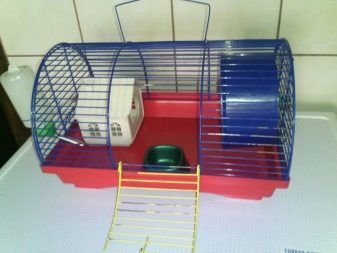
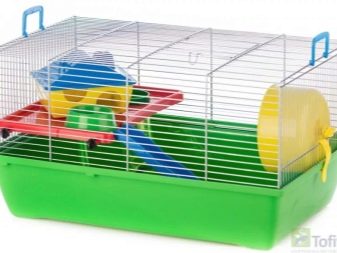
How to make?
Before proceeding with the construction of a dwelling for a rodent, it should be determined from what materials it will be.
The easiest option (but not too comfortable for a rodent) is a plastic container of a suitable size. A hole is made in the lid for entry. One or several sides of the container must be cut out by replacing it with a plastic net. The latter is fixed with clamps.
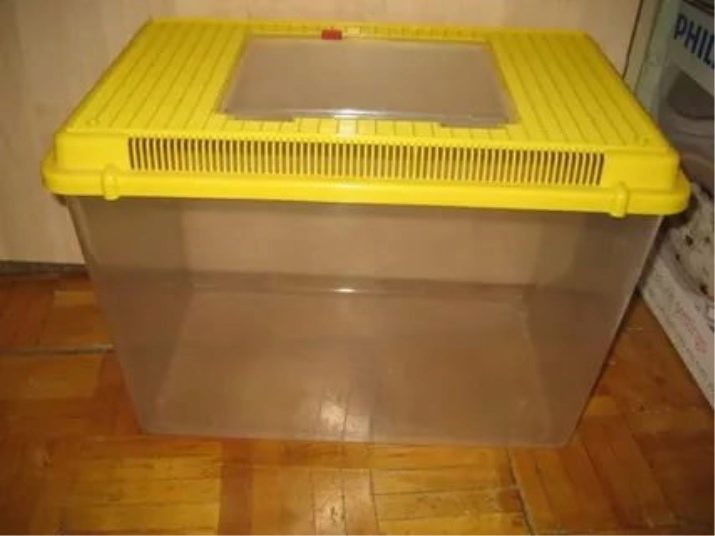
However, the method described above is, rather, an option for carrying or temporary housing. The construction of a full-fledged housing begins with the preparation of drawings. Of the materials you will need wooden blocks, the diameter of which is 3-4 cm, as well as a galvanized metal mesh with a hole diameter of not more than 20 mm.
The next step is to cut the bars and create a suitable mesh base (wooden frame). Before planking boards, it is better to process them with something for a more durable operation. For this, a regular wood varnish, applied in 2 layers, is suitable.
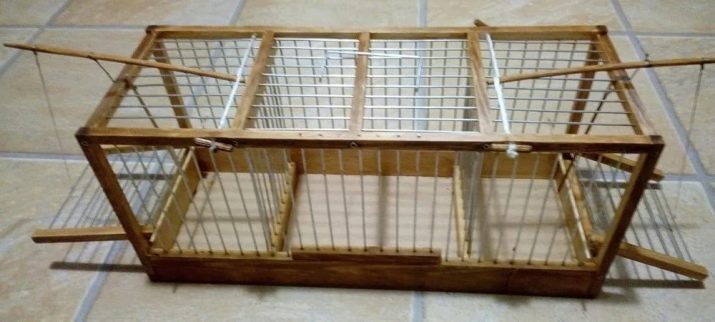
Galvanized wire mesh should be turned into parts - 4 walls, floor and ceiling. All of them must be carefully measured and accurately match each other. Otherwise, the cell will turn oblique, holes and crevices may appear through which the animal will run away.
After the grid is cut into the necessary details, the places of the slices should be processed with sandpaper. She needs to go over the entire surface of the grid to exclude the appearance of metal burrs and nicks on the finished product.
Optional, but it’s better to color the cage. This will make it more attractive and protect it from rust. For staining, conventional enamel is suitable.
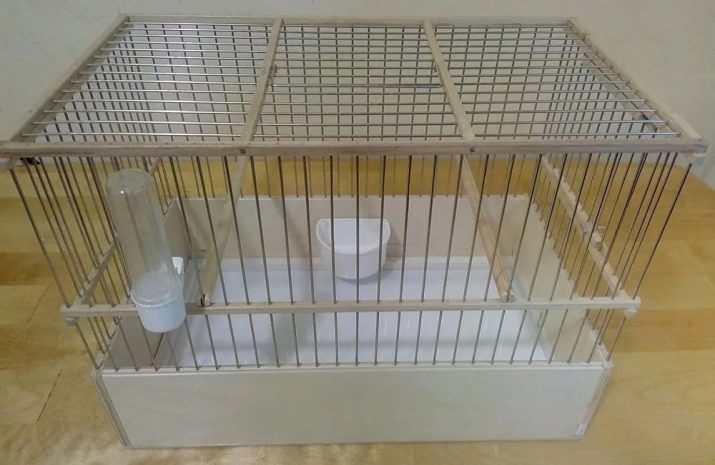
The next step is the pallet. For rats and mice, you can build a pallet of plywood or chipboard (lower part) and the same metal mesh. All other rodents cannot live in a cage with a mesh pallet, so they will have to make a wooden one.
Finally, you can proceed with the assembly. First, plywood (the lower part of the pallet) is nailed to the frame. It is important to ensure that it does not twist; you need to use nails quite often. Attach a mesh “cube” from above. It is more convenient to first assemble it by connecting all the parts with a metal wire, and then, using furniture staples, attach the net to the wooden floor.
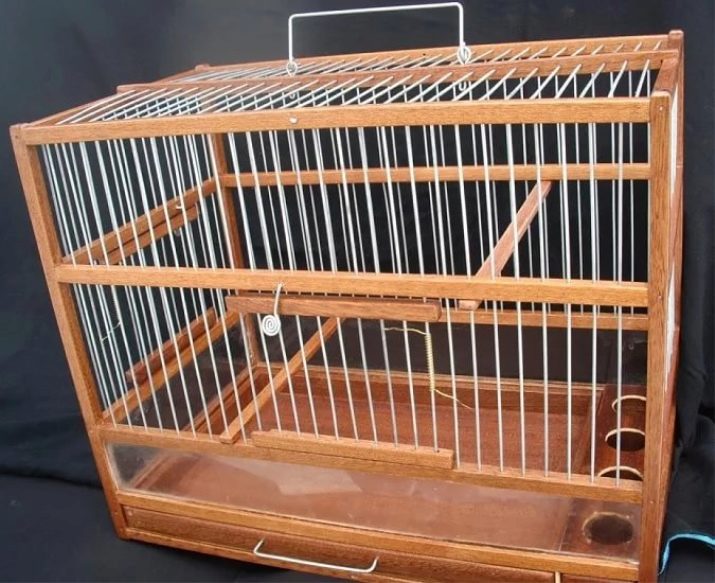
On how to equip a cage for rodents, see further.
